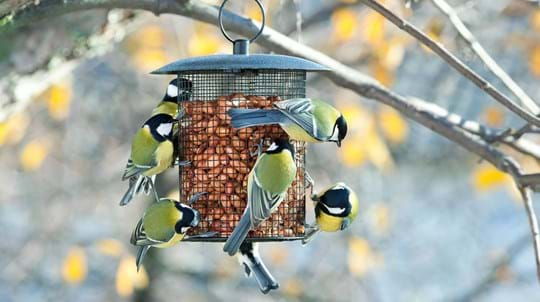
Credit: David Savory / Alamy Stock Photo
What do nuthatches eat?
Much of the nuthatch’s summer diet is made up of invertebrates, which its plucks from tree trunks and branches. In winter, the species feeds on seeds and nuts. Surplus nuts are hidden in gaps on tree bark to be eaten later. The nuthatch’s habit of hacking at these nuts to retrieve them from their hiding place is thought to have earned the species its name.








